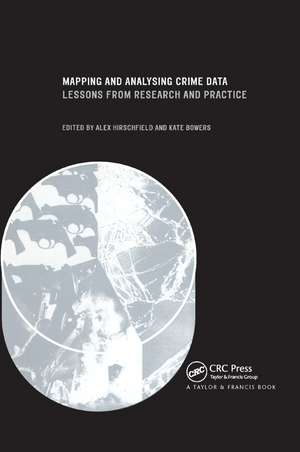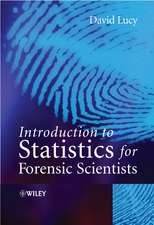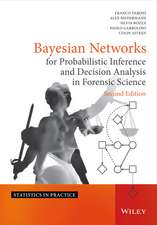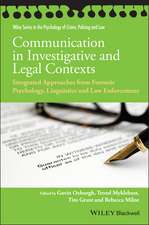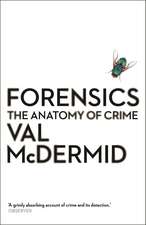Mapping and Analysing Crime Data: Lessons from Research and Practice
Editat de Alex Hirschfield, Kate Bowersen Limba Engleză Paperback – 5 sep 2019
Crime mapping and the spatial analysis of crime data have become recognised as powerful tools for the study and control of crime. Much of the emerging demand for more information and detailed crime pattern analysis have been driven by legislative changes, such as the UK's new Crime and Disorder Act which has placed a joint statutory duty on Police Forces and Local Authorities to produce crime and disorder audits for their areas.
The book sets out methods used in the fields of Geographical Information Systems and highlights areas of best practice, examines the types of problems to which spatial crime analysis can be applied, reviews the capabilities and limitations of existing techniques, and explores the future directions of spatial crime analysis and the need for training. It centres on a series of case studies highlighting the experiences of academics and practitioners in agencies centrally involved in the partnership approach to crime prevention.
Practitioners and academics not only in the UK but also worldwide should be interested in the book as an up-to-date information resource and a practical guide.
| Toate formatele și edițiile | Preț | Express |
|---|---|---|
| Paperback (1) | 494.01 lei 43-57 zile | |
| CRC Press – 5 sep 2019 | 494.01 lei 43-57 zile | |
| Hardback (1) | 1279.36 lei 43-57 zile | |
| CRC Press – 26 apr 2001 | 1279.36 lei 43-57 zile |
Preț: 494.01 lei
Preț vechi: 581.20 lei
-15% Nou
Puncte Express: 741
Preț estimativ în valută:
94.56€ • 102.75$ • 79.48£
94.56€ • 102.75$ • 79.48£
Carte tipărită la comandă
Livrare economică 21 aprilie-05 mai
Preluare comenzi: 021 569.72.76
Specificații
ISBN-13: 9780367397371
ISBN-10: 0367397374
Pagini: 308
Dimensiuni: 152 x 229 x 15 mm
Greutate: 0.59 kg
Ediția:1
Editura: CRC Press
Colecția CRC Press
ISBN-10: 0367397374
Pagini: 308
Dimensiuni: 152 x 229 x 15 mm
Greutate: 0.59 kg
Ediția:1
Editura: CRC Press
Colecția CRC Press
Public țintă
Academic and Professional Practice & DevelopmentCuprins
1. Introduction Part I: Crime Mapping and Research 2. Methods for Automating the Geographical Analysis of Crime Incident Data 3. GIS and the Journey to Crime: An Analysis of Patterns in South Yorkshire 4. Crime, Repeat Victimisation and GIS Part II: Local Authority Applications 5. Combating Crime Through Partnership: Examples of Crime and Disorder Mapping Solutions in London, UK 6. A GIS-linked Database for Monitoring Repeat Domestic Burglary Part III: GIS in the Police and Emergency Services 7. Mapping Out Hazardous Space for Police Work 8. GIS for Spatial Analysis of Fire Incidence: Identification of Social, Economic and Environmental Risk Indicators Part IV: International Perspectives 9. Tools in the Spatial Analysis of Crime 10. The Evolution of Crime Mapping in the United States: From the Descriptive to the Analytic Part V: Practical Considerations: What Can We Expect of GIS? 11. What to do About it?: Let's turn off our minds and GIS 12. Decision Support in Crime Prevention: Data Analysis, Policy Evaluation and GIS Applications; GIS in the police and Emergency Services; International Perspectives; Future Directions
Descriere
Crime mapping and the spatial analysis of crime data are now recognized as powerful tools for the study and control of crime and the demand for detailed crime pattern analysis continues to increase. This book sets out methods used in Geographical Information Systems. It highlights best practices, examines the types of problems to which spatial crime analysis can apply, reviews the capabilities and limitations of existing techniques, and explores the future directions of spatial crime analysis and the need for training. The book focuses on a series of case studies that highlight the experiences of academics and practitioners in agencies centrally involved in the partnership approach to crime prevention.
